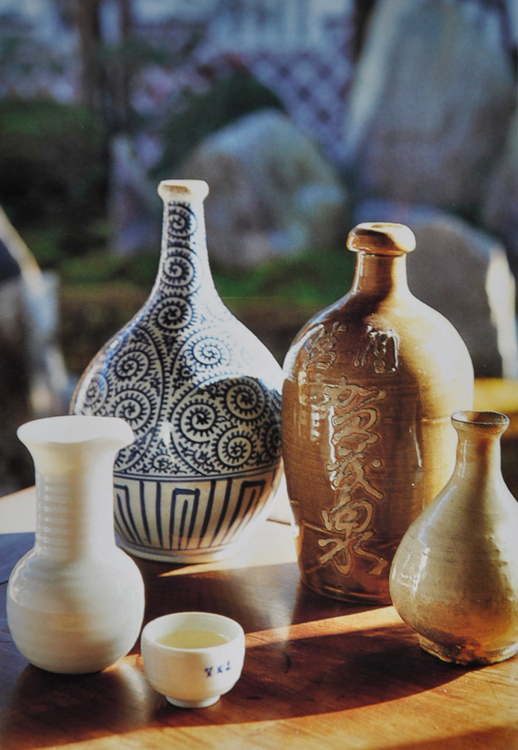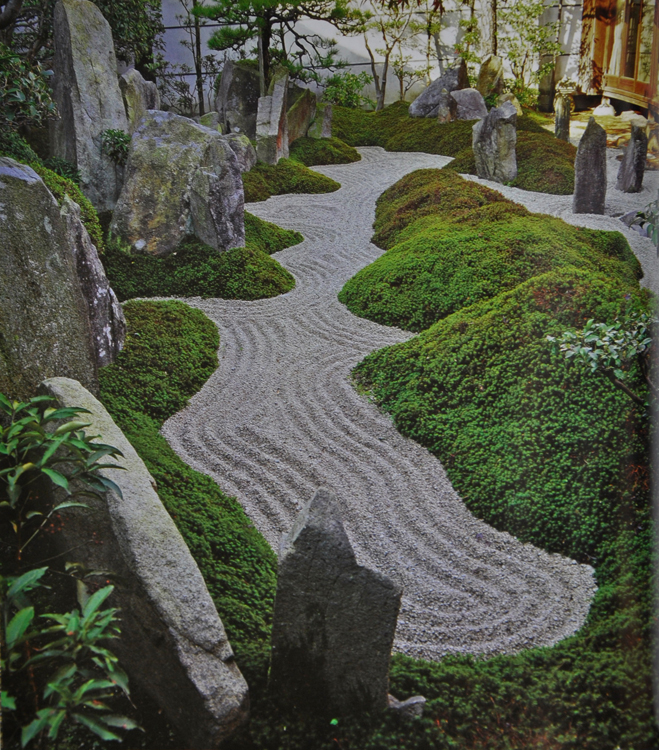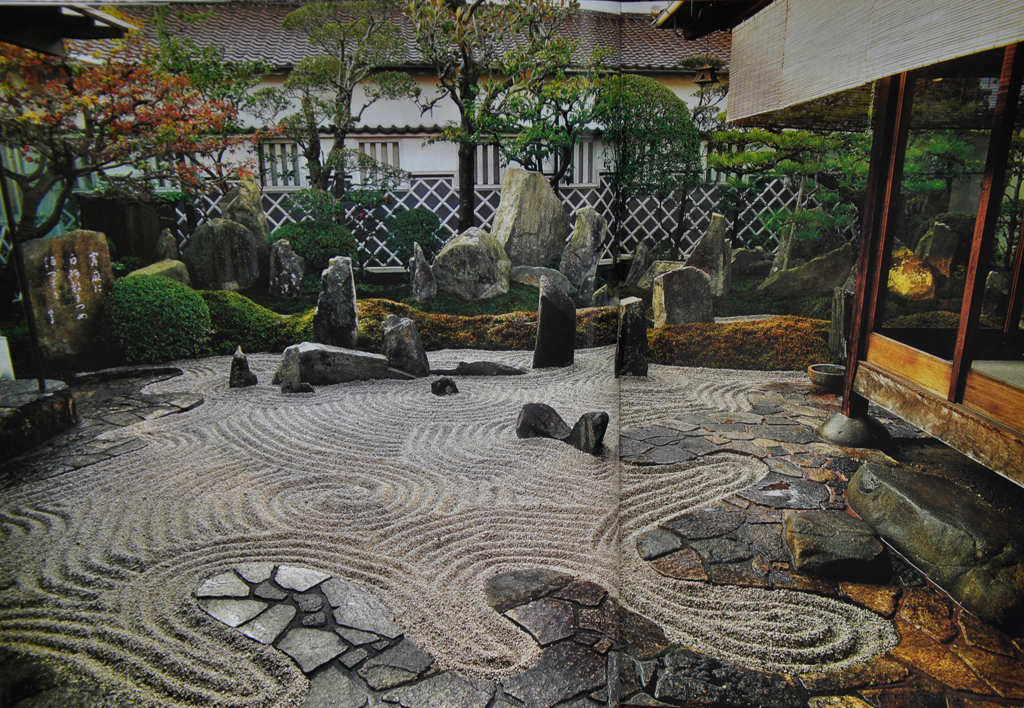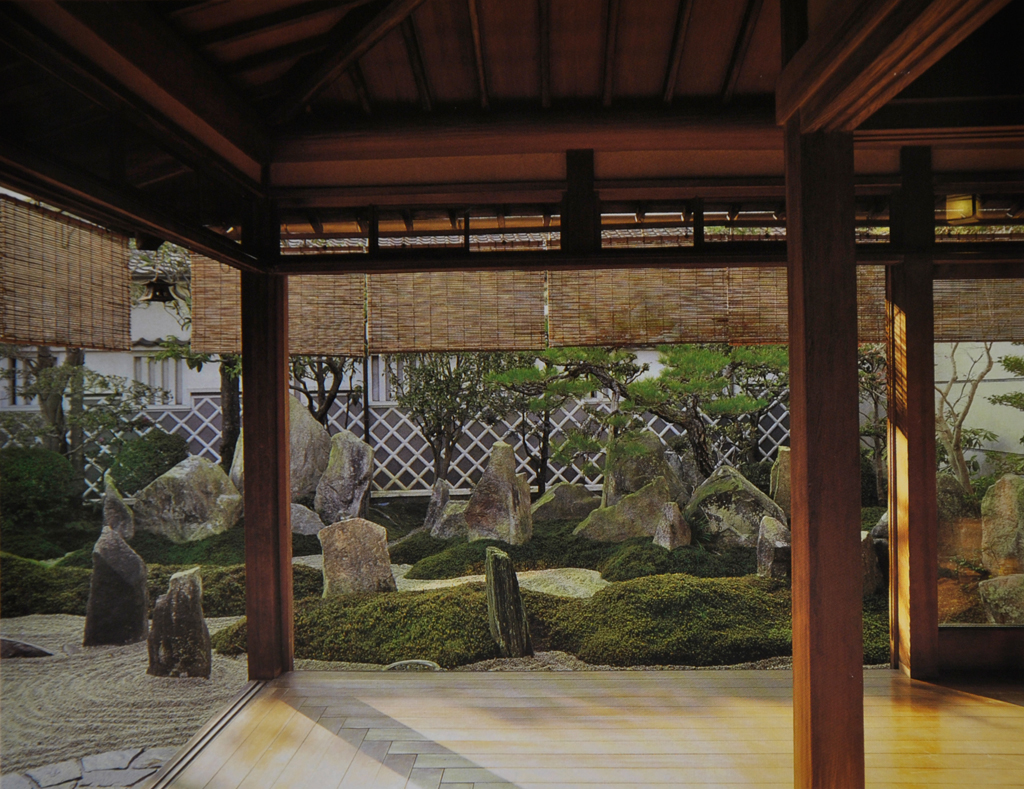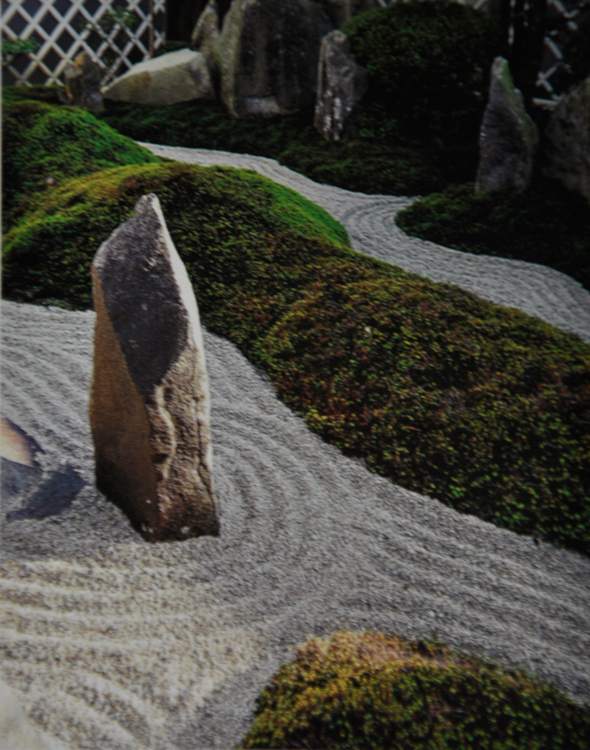
Kamoizumi House
HigashihiroshimaSake, the Japanese rice wine, is usually produced in locations with access to good spring water. Kamoizumi Brewing Company chose the site of Higashi Hiroshima and has been making sake there since 1912. Although sake making practices have been changing since World War II, this company has sought to revive and preserve traditional methods. Hisao Maegaki, the third-generation president of this company, has in particular been working on popularizing jyun mai syu sake made just with rice, koji and water, without the use of alcohol or saccharine.
The Kamoizumi house and storehouse were originally built nearly 240 years ago, and several extensions and renovations have been carried out to the property since then. Hisazo Maegaki, the father of the current owner, built the main drawing room in 1955, and had wanted to rebuild the garden in front of it too. Coincidentally, the famed garden designer Mirei Shigemori happened to visit the house after an introduction made by a relative. Known as a pioneer of modern Japanese garden design, Shigemori was quite busy with working in bigger temples and public buildings at that time. However, he fell in love with Kamoizumi house. Soon after he left it, he sent a telegram to Hisazo to inform him of his intent to design the garden, and the day he planned to start work. Shigemory arrived on the appointment day with his many followers and set to work to create the beautiful garden we see today.
Shigemori wanted to use an existing storehouse in the back of the garden as shakkei, or borrowed scenery. Typical of storehouse construction in the area, the wall of this building had been finished with namako black tiles set in lime plaster. However, since the wall of the storehouse was considered too short for the purpose by Shigemori, the Maegaki family rebuilt it to the desired height. The garden itself was designed by Shigemori incorporating trees that had existed on the site before. He also went to the mountains owned by the Maegaki family and selected rocks by marking them with his walking stick; these were then brought back by his followers. Shigemori carefully directed the positioning, direction, and combinations of each rock that had been brought, according to the plan he had in mind when he selected them, so that not a single rock that was brought went unused.
In the half century since it completion, the garden has matured. Pine, fragrant olive and maple trees from the background, while gentle hills covered with moss and stones stand in perfect harmony forming the mid-ground. The flat flagstones are arranged on shapes of waves along the engawa of the house to form the foreground. The remaining foreground is filled with white Shirakawa sand on which wave-like patterns are racked. The background of the namako wall of the storehouse indeed forms a perfect complement to the garden, even though its white lime plaster wall has changed color with the passage of time and rainwater washing over it, just as Shigemori envisaged over fifty years ago.
The current owner Hisao explains that his garden design had been inspired by the Setonai-kai sea located not so far from his house, which has a lot of small islands. His father had enjoyed watching this garden as he got old, while he himself had played with the stones in the garden as a child, imagining the flat stones to be sailboats in the sea. Although the garden is a work of art, it is not like a museum piece for him but rather a living part of his family’s life. He considers this to be the true beauty of this garden. He enjoys welcoming guests to his house to share his garden and tea with them.
anshin©2011All rights reserved. When using the materials of the site, reference is obligatory.
Proposals for co-operation, as well as comments and suggestions on the site please send to the address: anshin-sad@mail.rutel: +7 (965) 121-80-60, 10am-20pm
